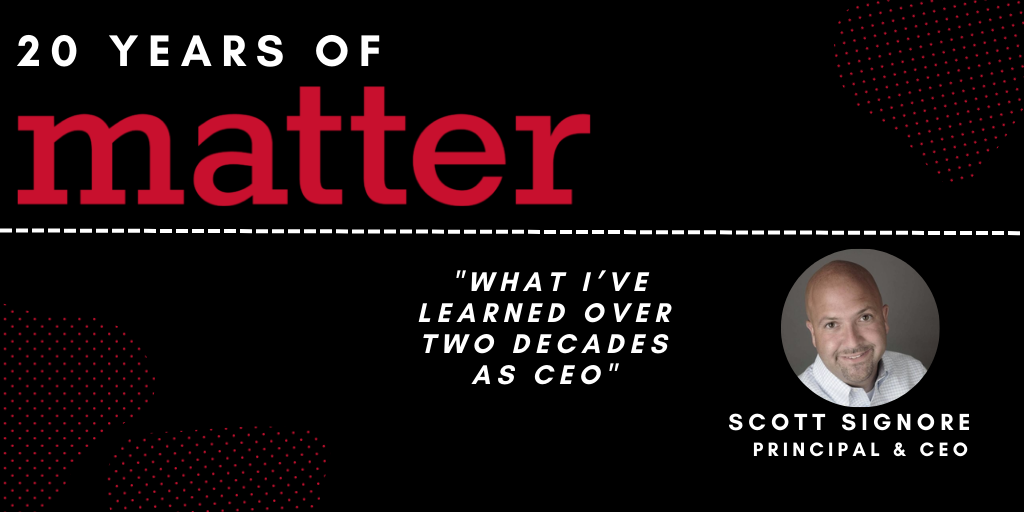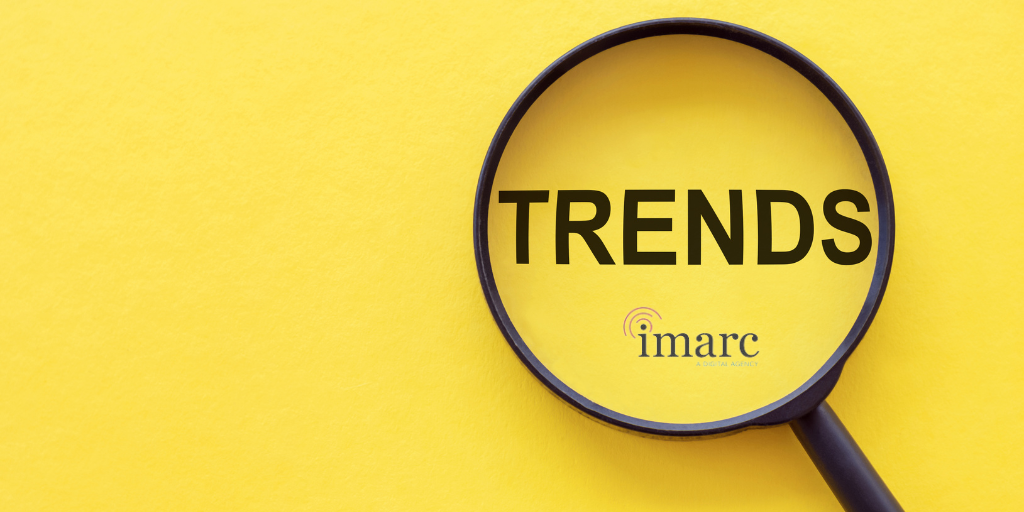This post was originally published on the Slalom Technology blog.
___
Do you still visit your local shopping mall for clothing, once a season? Do you go without having any idea of what products you might find there? It’s likely that you were driven to visit the mall because there is a product you like and hope to find there. It’s also likely that you encountered this product either browsing the internet or by being a victim of social media marketing. Or maybe you actually chose to ship it to the in-store location to capitalize on free shipping. Or maybe you just can’t wait two full days for the product to ship to your house, so you visit the mall to take it home today. If you can’t relate to any of these scenarios, then I’m sorry, you’re old.
We now live in a digital world. Customer expectations are higher than they’ve ever been — especially when it comes to shopping. I don’t know about you, but I can’t remember the last time I even visited my local convenience store. In a world with online subscription services for almost anything (e.g. grocery shopping, dirty laundry washing, car driving, dog walking) and Amazon Prime’s free 2-day shipping, why even leave the house? Is life really that tough these days?
The advancements in tech, for both enterprise and small businesses, have been making life for us commoners more and more convenient. This is comparable to what the Industrial Revolution did for our way of life. We are currently experiencing a new revolution, in the form of tech. We’ve been experiencing these changes in cultural behavior for some time now. I’m sure you’re already aware. Although, the issue is that these changes are occurring rapidly. So much so that many businesses are having a difficult time keeping up. Let’s uncover why and how contemporary eCommerce software platforms are influencing this change, and why it should be a business priority to keep up with the trends in commerce.
Trends in Commerce by the Numbers
“80% of shoppers used a mobile phone inside of a physical store to either look up product reviews, compare prices or find alternative store locations,” says Justin Smith — CEO of OuterBoxDesign.com. How Ironic, huh?

Typically, a brick-and-mortar store location will not have a brand’s full catalog in-stock. So, many shoppers are now relying on a brand’s online presence as the primary source of product offerings. If the store doesn’t have the product you want in your exact size or color, chances are that you can find the exact size and color you desire, online. Many stores today are even capable of placing the order, on your behalf, directly from a kiosk or digital interface, in-store. Whether you’re using the brand’s online presence to extend your in-store catalog, or whether the brand’s online presence is what brought you to the store in the first place, having a strong online presence should clearly be a priority for each retail brand. So how much of an impact, exactly, does having an online presence make?
Let’s start at the macro level. Although the annual growth rate in the retail market is trending downwards gradually, year-over-year, the market share for online retail sales is trending upwards. The growth rate for the online retail market was at 15% in 2018, versus a dismal 3.9% growth for the retail market as a whole. With this growth in online retail, the market share for purchases on the web have acquired 11.6%, 12.9%, and finally 14.3% of the global retail market share from the years 2016 through 2018. Yes, the global retail growth rate is slowing, but the growth that is still occurring is rooted mostly in this 14.3% market share from eCommerce. In 2018, eCommerce represented 51.9% of retail sales growth, worldwide. This translates to a whopping $4.878 trillion in projected online sales for the year 2021, in terms of total volume. Compare this to $1.845 trillion in eCommerce sales for 2016.
The importance of a strong online presence in the market place cannot be stressed enough. Many shoppers now hesitate to purchase anything in-store before checking the web store first. They’re hoping to find a better price or maybe even an alternative color or trim. Do they not have your size in-store? Well, I’m sure they have your size on their web store! Ultimately, as a brand, you want to do everything you can to “save the sale.” The merging of in-store and digital shopping channels is allowing this to be possible.
Furthermore, mobile devices have a unique impact on retail sales. Digital and mobile are buzzwords that are often thought of in tandem, today. If you were to blindly walk into a brick-and-mortar store without access to the digital catalog, then you’re cheating yourself out of the possibilities of landing the best purchase at the best price. Not to mention the ability to mooch off of free promo codes from online discount providers, such as retailmenot.com or the ‘Honey’ Google Chrome extension. A healthy 40% of Black Friday sales in 2018 were made via a mobile device. That doesn’t even include online sales from a desktop! Who dares to pull an all-nighter to camp outside Best Buy on Black Friday anymore?

It’s not just the impact of creating a more convenient revenue channel by offering an online shopping interface — it’s the impact that this ease of access to information has on sales, collectively. On Cyber Monday 2018, 30% of the total purchases were made on a mobile device. Not impressed? Well total purchases aside, 54% of the total store visits were online. While all online visits don’t directly translate to an online purchase, it is safe to say that a large portion of in-store sales are initially influenced by an online visit. More than half of Cyber Monday (2018) customers browsed online before heading to the retail store locations. Again, 80% of total shoppers regularly use mobile phones to look up product reviews, style options, compare prices, and find alternate store locations.
Competing in today’s market takes more than just simply having a digital presence. A poor online shopping experience can completely deter a customer from a brand, abandoning it for a competitor. 84% of people claim to have experienced difficulty completing a mobile transaction, and 40% of customers will pursue a competitor’s business after a poor experience. So, what exactly is driving these new trends in commerce?
Industry Trend #1: The Connected Customer
With leading retailers all adopting nifty new features to increase sales and secure brand loyalty, competitors have no choice but to follow their lead. Today’s customers are connected, mobile, social, and digital-savvy. They have very high expectations and will abandon a brand for not meeting these expectations. Catering to these customers has led to one of the biggest trends in commerce today — the “Connected Customer” trend.

Customers want a seamless and consistent experience, regardless of the device (e.g. desktop, tablet, smartphone) they choose to interact with or the channel (e.g. website, phone call, Instagram, etc.) they choose to establish the interaction. They demand responsive social media interaction, just as it would be if they were talking to an in-store attendant. They want the support that’s provided by an in-store experience, but they also want the seemingly endless inventory catalog (“endless-aisle”) provided by the web store. This consistent, channel-agnostic experience is the exact definition of Omni-Channel.
Industry Trend #2: Unified Commerce
It doesn’t stop with the new connected customer revolution. The biggest trend in commerce today goes beyond omnichannel. Not only should customers receive a consistent experience through any channel, but they also want an entirely unified shopping experience. This starts from initial marketing to relevant product recommendations, order fulfillment, responsive customer service, and relevant follow-up marketing.

The modern shopper wants to order from anyway and have their order fulfilled from anywhere. Furthermore, they expect responsive customer service and relevant follow-up marketing, following their purchase. There is a common term used to describe this trend of providing a consistent and unified shopping experience: “Unified Commerce.”
The Ideal Customer Experience
With all this talk of shopping experience expectations, I bet you’re wondering what an ideal experience might be like…
Let’s say our “Connected Customer” is a millennial woman. She browses her favorite brand’s Instagram page, after seeing the brand’s most recent post on her feed. This post displayed a new top from their Spring collection. It’s perfect for the upcoming music festival that she’s attending with her friends.
On the brand’s account page, she finds a few other articles of clothing that would fit perfectly together. She clicks on the shop icon, which then routes her to the brand’s website in a new browser window. She adds the top to her cart, and she’s also able to easily add the other matching pieces with the site’s product recommendation features. The shopping cart and checkout features, enabled by the brand’s eCommerce platform, guide her all the way to the shipping method stage. The checkout feature gives her an estimation of when she can expect the products at her door. Based on the available shipping options, she realizes that she won’t receive her products in time for the weekend! She rushes out the door to the nearest store location.
At the store, she manages to find almost everything, except they don’t have her size in stock for the top she wanted. She’s out of luck! Or is she? A store employee directs her to a digital kiosk where she can search for and select the exact product she is looking for. The system spits out a myriad of options for her. She can order the product and ship it to her home address, but again, she wouldn’t receive it in time for the weekend. She can order the piece to the store and pick it up, but that doesn’t solve the issue either. Another feature allows her to view the inventories of all other store locations. She finds exactly what she’s looking for at another location in a neighboring town. These new “order from anywhere and fulfill from anywhere” eCommerce platform features are referred to, collectively, as “endless-aisle.” She makes her purchase directly from the digital interface to ensure that it doesn’t sell out. She picks it up that same day!
On Friday, she begins packing for the big weekend and realizes that her pants are too big on her — now that she lost all that weight on her keto diet.

She doesn’t lose her cool. She navigates to the website and initiates a chat with a live customer support agent from the “Contact Us” page. The brand has made the right decision to fully integrate their eCommerce platform with their other CRM capabilities, such as customer service, in this case. The agent reserves her bottoms in the right size at the nearest store location. She picks it up as she leaves town with her friends to the festival. As time passes, she continues to receive exclusive email promotions for being such a loyal customer! This is made possible by eCommerce marketing features, which most eCommerce platforms will provide.
This is truly a unified shopping experience, from initial marketing to order fulfillment to real-time customer service and follow-up marketing. This is the shopping experience that the modern shopper has grown to expect from all their favorite brands. The brands that fail to support these new eCommerce capabilities are the brands that are losing market share to their competitors.
A Final Call-to-Action for all Retailers
What’s strange is that, although these trends are making a big impact on commerce, many companies are failing to take action. For instance, the sales pipeline for the Salesforce B2C Commerce Cloud product is dismal, as many companies are opting to build on top of what they already have, in-house, or are investing in other business priorities. However, these same retailers struggle mightily to keep up with their ever more demanding customers, as their competitors continue to provide more unified shopping experiences. These retailers likely still have a separate system for order management, customer service, and marketing. These disparate systems all have their own versions of the truth for their customer data. The complex back-end integrations required by these systems, just to support normal business operations, are very costly and time-consuming for IT teams.
Wouldn’t it be nice for retailers to see their customer’s attributes, order history, and service requests from a single screen? Platforms like Salesforce B2C Commerce Cloud, Magento, Shopify, SAP Commerce Cloud, and Oracle Commerce Cloud enable these capabilities. However, very few eCommerce platforms offer full-stack CRM capabilities, outside of the big guns (i.e. Salesforce, SAP, Oracle). This forces retailers to support customers through multiple disparate systems.
Furthermore, many platforms are not cloud-based, limiting intimate connection to customers and state-of-the-art features like “endless-aisle.” The Oracle and SAP eCommerce platforms have just recently been rebuilt to operate as cloud applications — with Salesforce leading the charge through acquisition and integration with their already cloud-based, full-stack CRM. Shopify Plus is another option that may provide a similar (although less extensible) set of features with a pricing structure that makes more sense for medium and small-sized retailers.
Regardless of the platform that’s chosen, it’s important for businesses to at least make the decision to implement a contemporary eCommerce platform. This is the only way to provide a sufficient shopping experience for their customers. As a large enterprise, here are some common high-level features that you should expect from your eCommerce solution:
- Product management
- Order management
- Customer experience management
- Order processing and fulfillment
- Intelligence and personalization
- Globalization/Localization
- Third-party integrations
- Mobile experience
With so many options out there, it can be very difficult to choose the right platform. Not all platforms will provide all the features needed, and some may have pricing structures that are not suited for every retailer. Using a process of elimination will help narrow down the list.
What’s most important is for businesses to make it a priority to keep up with these new trends in commerce. It’s easy to get left behind in today’s world of the connected customer with increasingly higher expectations. Ditch the disparate legacy systems and choose an eCommerce platform that provides you with the best platform for success. No pun intended.
Citations:
https://www.gartner.com/doc/3877477?ref=mrktg-srch
https://www.digitalcommerce360.com/article/us-ecommerce-sales/
https://www.outerboxdesign.com/web-design-articles/mobile-ecommerce-statistics
https://www.statista.com/statistics/379046/worldwide-retail-e-commerce-sales/
https://comparisons.financesonline.com/
https://worldwideinterweb.com/smartphone-addiction-funny-memes-gallery/
http://www.titogoldstein.com/crazy-man-wisdom/
https://cheezburger.com/6468869/18-sarcastic-keto-memes-thatll-make-you-really-want-some-carbs
https://medium.com/@techformindful/unsubscribe-opt-out-of-spam-people-1e12338cf176


